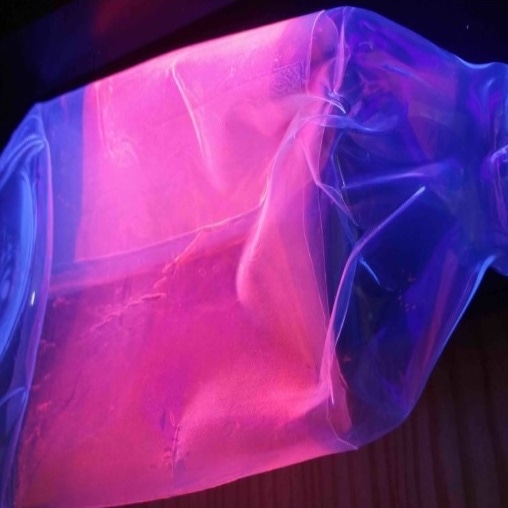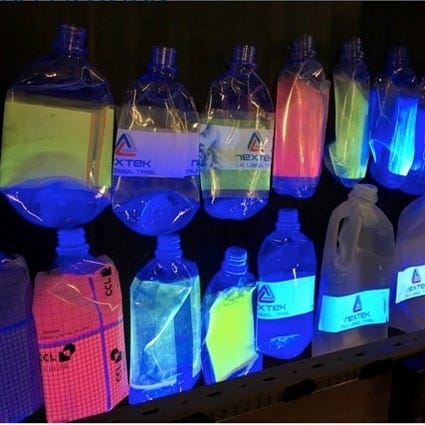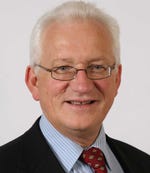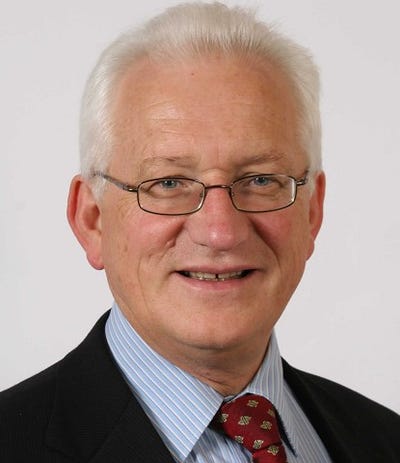New fluorescent tech can light up food packaging recycling rates
Until the development of PRISM technology there hasn’t been an effective way to differentiate between a plastic bleach or milk bottle of the same polymer type.
January 15, 2020

Current sustainability objectives and the drive to a more effective circular economy have increased the demand for recycled materials in packaging, yet despite this the biggest hurdle to boosting the amount of recycled plastic for food packaging remains the poor quality of recyclates.
One of the key limitations of the current technologies is that whilst recyclers can sort plastic by polymer type, they can’t readily identify what the product once contained.
Up until now there has been no effective way to differentiate between a bleach bottle and a milk bottle of the same polymer type.
The European Plastics Converters Association (EuPC) reported that almost 60% of the European plastics converting companies find it hard to get a supply of recycled plastics materials that meet their quality standards.
The absence of an automated method for sorting and separating mixed plastic waste such as polyethyene terephthalate (PET), high-density polyethyene (HDPE) and polypropylene (PP) based on prior food contact applications has resulted in a severe lack of value creation and therefore investment in the plastic waste sector.
According to a 2019 report by the European Commission, of the 27.1 million tonnes of plastic waste collected in Europe in 2016, only 31% went to recycling facilities. The rest went to incinerators or landfills.
Food-grade plastic has been the most complex to obtain due to the risks of using second-hand plastics containing toxic chemicals that are potentially dangerous to human health.
Now an innovative identification technology is poised to separate plastic to food-grade quality in a single step, thereby radically transforming the sorting process in recycling facilities.
A world-class British consortium has developed a technology that can rapidly and efficiently distinguish between food-grade and nonfood-grade polymers, identify black plastics and tag full-length shrink-sleeves.
Invisible barcode for plastics recycling
Plastic Packaging Recycling using Intelligent Separation technologies for Materials (PRISM) applies high-performing luminescent materials to labels on plastic packaging, creating what is best described as an invisible barcode for plastics recycling.
The process is simple. Fluorescent markers produced from materials recovered from fluorescent lamp recycling and non-rare earth-based compounds are printed on labels or plastic packaging sleeves.
As the mixed plastic waste runs along the conveyor belt the high-speed sorting system is triggered by an ultraviolet (UV) light source that identifies the coded PRISM label, reads its code and air propels it into the appropriate recycling stream.
Following extensive trials PRISM is now well proven in Municipal Recycling Facilities (MRFs) and is “plug-and-play” ready. It is complementary to existing Near Infrared (NIR) technology and can easily be adapted to most sorting facilities around the world to target specific recycling streams such as food contact plastic packaging.
The innovative technology uses traditional labelling and branding methods and is designed to identify a host of different materials applying multiple markers for a wide range of codes. The markers are typically used on a label or sleeve on the container that is removed from the plastic during the recycling process.
If these containers are not processed through a PRISM-enabled MRF and end up in a landfill, the labels use very low levels of markers that don’t migrate into the environment.
Even the most challenging plastic waste can now be sorted in a single step to over 96% purity with a yield in excess of 95%, which meets the EU’s stipulated 95% purity for PET food-grade plastic.
This is a significant step forward in the subcategorization of plastics that are sorted automatically at high speed. The technology opens a wealth of new opportunities for brand owners desiring to recover their packaging as part of the circular economy, and already there is global brand owner interest.
The next step is developing acceptance of the labels with brand owners and the preparation of the MRFs with the necessary retrofits of the software and UV illumination.
PRISM is set to provide a much-needed impetus to the struggling recycling sector. It will also prove to be an efficient substitute for virgin plastic as it offers one of the most effective ways of closing the plastic loop yet.
British Consortium of PRISM Partners
Nextek (London), PRISM project manager and recycling R&D consultancy
Brunel University London-Wolfson, material Processing Luminicescent expertise
CCL Labels (Castleford, UK), multinational label maker
Enlightened Lamp Recycling (Redhill, UK), fluorescent lamp recyclers
Johnson Matthey (London), specialty chemicals, catalysis and process technology
Mirage Inks (Frome, UK), manufacturer of printing inks for packaging applications
Tomra R&D (Karlich, Germany), provider of automatic detection systems
WRAP UK (Banbury, UK), leading waste and resources charity
See also Project gets funding for invisible markers to improve plastics recycling quality, published February 2016.

Edward Kosior, PhD., has 46 years’ plastics recycling expertise, split evenly between 23 years as an academic and 23 years working in the industry. He has been instrumental in designing numerous modern recycling plants and has achieved a number of patented recycling breakthroughs. In 2004 Professor Kosior founded Nextek Ltd to provide consultancy services to assist in the strategic approaches to sustainable packaging,
About the Author(s)
You May Also Like




